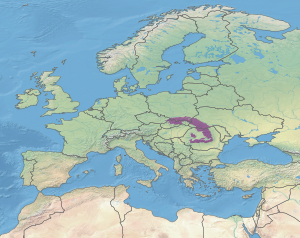
The Sierra Madre Occidental pine–oak forests are a Temperate broadleaf and mixed forests ecoregion of the Sierra Madre Occidental range from the southwest USA region to the western part of Mexico. They are home to a large number of endemic plants and important habitat for wildlife.
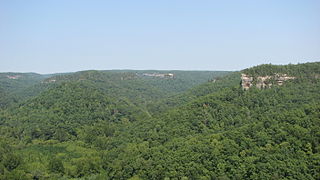
The Appalachian mixed mesophytic forests is an ecoregion of the temperate broadleaf and mixed forests biome, as defined by the World Wildlife Fund. It consists of mesophytic plants west of the Appalachian Mountains in the Southeastern United States.

The Northern Anatolian conifer and deciduous forests is a temperate coniferous forests ecoregion located in northern Anatolia, Turkey.

The Appalachian–Blue Ridge forests are an ecoregion in the Temperate broadleaf and mixed forests Biome, in the Eastern United States. The ecoregion is located in the central and southern Appalachian Mountains, including the Ridge-and-Valley Appalachians and the Blue Ridge Mountains. It covers an area of about 61,500 square miles (159,000 km2) in: northeast Alabama and Georgia, northwest South Carolina, eastern Tennessee, western North Carolina, Virginia, Maryland, and central West Virginia and Pennsylvania; and small extensions into Kentucky, New Jersey, and New York.

The Caucasus mixed forests is a temperate broadleaf and mixed forests ecoregion in the Caucasus Mountains, as well as the adjacent Lesser Caucasus range and the eastern end of the Pontic Mountains.

Tatra(s) National Park is one of the nine national parks in Slovakia. It is situated in North Central Slovakia in the Tatra Mountains. The park is important for protecting a diverse variety of flora and fauna, with many endemic species, including the Tatra chamois.

The Illyrian deciduous forests is a terrestrial ecoregion in southern Europe, which extends along the eastern coast of the Adriatic Sea. It belongs to the Mediterranean forests, woodlands, and scrub biome, and is in the Palearctic realm.

The South Apennine mixed montane forests is an ecoregion in the southern Apennine Mountains of southern Italy and Sicily. It has a Mediterranean climate, and is in the Mediterranean forests, woodlands, and scrub biome.

The Dinaric Mountains mixed forests are a terrestrial ecoregion of the temperate broadleaf and mixed forests biome in Southeastern Europe, according to both the WWF and Digital Map of European Ecological Regions by the European Environment Agency. It also is in the Palearctic realm.

The Apennine deciduous montane forests are a temperate broadleaf and mixed forests ecoregion in the Apennine Mountains of Italy. The development of these forests is ensured by the high rainfall in the Apennines, combined with a temperate-cool climate. Because of climate change, the presence of silver fir, although still widespread, has been dramatically reduced in favour of beech.

Central Europe contains several life zones, depending on location and elevation.
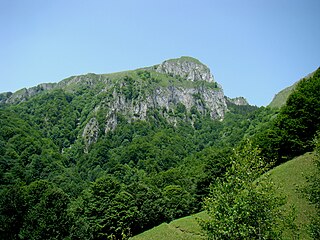
The Buila-Vânturarița National Park is a protected area situated in Romania, in the central-northern part of Vâlcea County, in the administrative territory of the localities Costești, Bărbătești, and Băile Olănești.
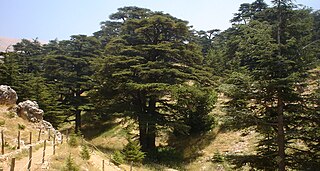
The Southern Anatolian montane conifer and deciduous forests ecoregion, in the Mediterranean forests, woodlands, and scrub biome, is in the eastern Mediterranean Basin.

The Anatolian conifer and deciduous mixed forests is an ecoregion located in southwestern Anatolia, Turkey. It has a Mediterranean climate, and is part of the Mediterranean forests, woodlands, and scrub biome.

The Cantabrian mixed forests is a temperate broadleaf and mixed forests ecoregion in southwestern Europe. It extends along the coastal Cantabrian Mountains and Galician Massif of Northern Spain, extending south into northern Portugal, and northwards through the westernmost Pyrenees to southwestern France. The ecoregion extends from the seacoast to the highest peaks of the Cantabrian Mountains. The highest peak is Torre Cerredo at 2,648 meters elevation.

The Iberian conifer forests is a Mediterranean forests, woodlands, and scrub ecoregion in southwestern Europe. It includes the mountain forests of southern and central Spain.
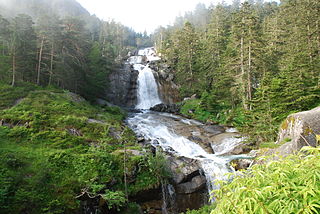
The Pyrenees conifer and mixed forests is a temperate broadleaf and mixed forests ecoregion in southwestern Europe. It extends along the Pyrenees mountains which run east and west along the border between France and Spain, and includes all Andorra. The ecoregion extends from the lower slopes of the Pyrenees to its highest peaks, which include Aneto, Posets, and Vignemale.

The Alps conifer and mixed forests is a temperate broadleaf and mixed forests ecoregion in central Europe. It extends along the Alps mountains through portions of France, Italy, Switzerland, Germany, Liechtenstein, Austria, and Slovenia. The ecoregion extends from the lower slopes of the Alps to its peaks, which include Mont Blanc, at 4,809 m (15,778 ft) the highest peak in the Alps.

The Taiheiyo montane deciduous forests ecoregion stretches for about 700 km (430 mi) along the eastern slopes of the island of Honshu, with some small patches on the southern islands of Shikoku and Kyushu. Lower elevations to the east along the coast are in the Taiheiyo evergreen forests ecoregion; higher elevations to the west are in the Nihonkai montane deciduous forests ecoregion. Characteristic forests are of Japanese beech, stone pine, and spruce.

The East Afghan montane conifer forests ecoregion covers a series of unconnected conifer forests along the border between Afghanistan and Pakistan, at elevations of 2,000 metres (6,600 ft) to 3,400 metres (11,200 ft) above sea level. The ecoregion supports the near-threatened Markhor (Capra falconeri chiltanensis), known as the Screw-horned goat, the national animal of Pakistan. The forests of the ecoregion have been heavily thinned for timber.

